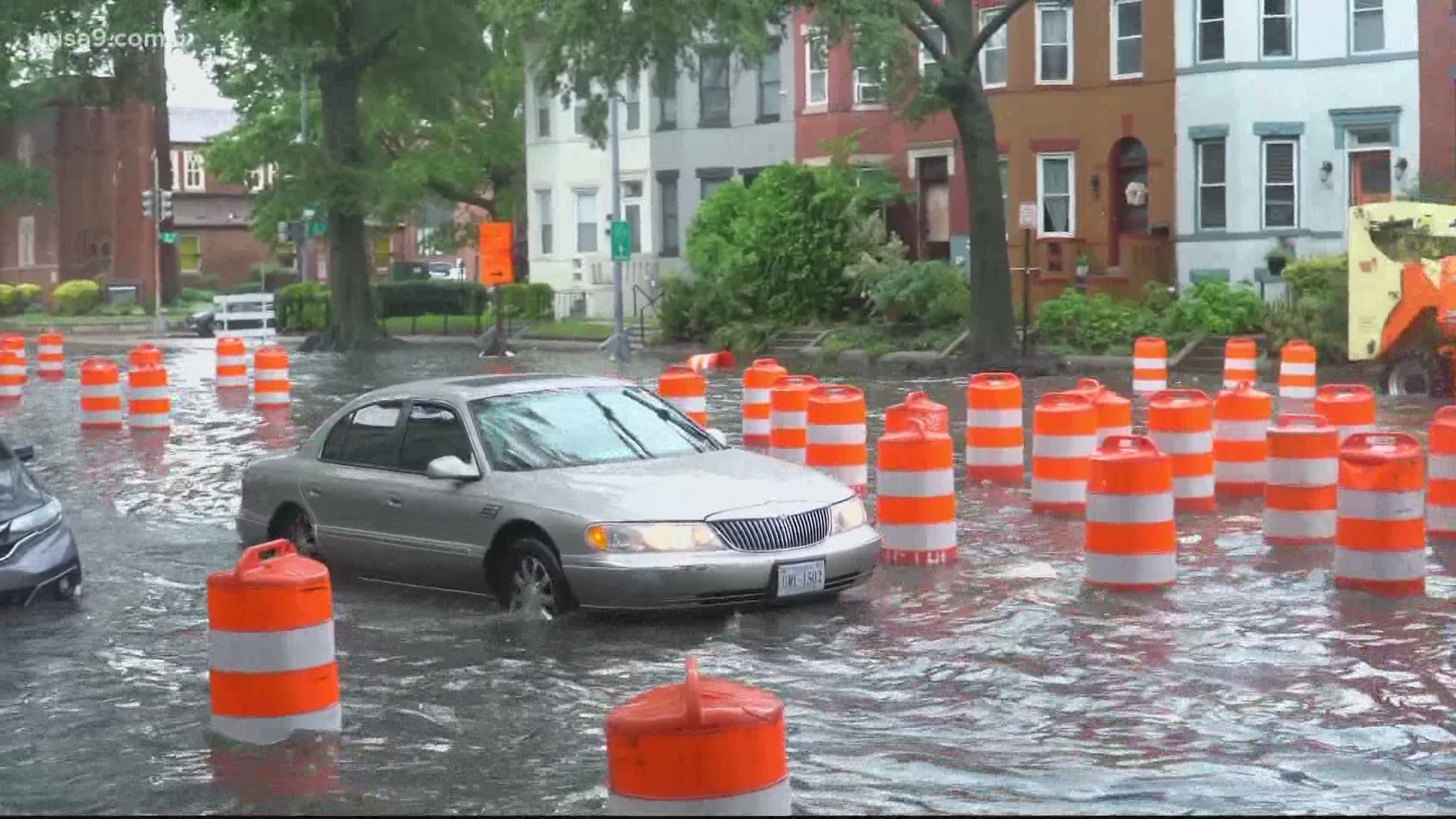WASHINGTON — First came the rain. It was blinding at times as it came down fast and furious over D.C. Metro Thursday. Moments later, streets looked more like streams, people quickly became surrounded by water with nowhere to go, roads buckled.
It was chaotic, to say the least.
So what brought on Thursday's flash flood event? The simple answer: tropical moisture and low pressure.
It's one thing to have moisture in the air. It's quite another to have tropical moisture in place. It's a big deal because there is more moisture to work with. Tropical moisture can increase the chance for heavy rain.
So much rain, so little time
One of the factors to monitor with flash floods caused by heavy rain is the rainfall rate. Precipitation rate is how much rain is falling over a given period of time. The average summer thunderstorm can produce up to 1-inch of rain per hour, according to forecasters at The National Weather Service.
The problem is getting too much rain in a short period of time.
In Thursday's weather system, the National Weather Service in Sterling noted that the precipitation rate was 3-inches per hour at times. There were reports of even higher amounts.
For reference, in the 2016 Ellicott City flash flood the area received as much as two inches of rain in 15 minutes.
So when you have that amount of water falling in a short amount of time the ground and drains simply cannot keep up and absorb or drain it fast enough.
Not to mention, millions sometimes billions of gallons of water fall out of storms. Using the USGS Survey rain calculator, it is estimated that roughly
3,545, 226, 240 gallons of water fell over D.C. Thursday.
That's enough for more than 88 million 40 gallon baths.
(Note: 3.31" of rain fell over D.C. Thursday. For our calculation in the rainfall caulculator we rounded down to 3.0).

